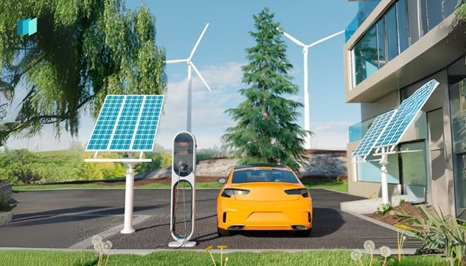The Dawn of Decentralised Energy Independence
Traditional energy infrastructure is facing previously unknown hurdles as modern society stands at a crossroads. A strong movement toward sustainable alternatives has been triggered by climate change, system flaws, and growing energy demand. Modern portable power plants, including ones with a capacity of 1024Wh and an output of 2600W, provide more than merely a technical development; they represent a fundamental rethinking of how communities receive and use clean energy.
Transforming Energy Accessibility Beyond Traditional Boundaries
Despite being the backbone of present civilization, the traditional power infrastructure contains built-in constraints that limit energy delivery to designated places. These geographic constraints are overcome by a power plant built with solar panels, which may generate energy in regions that are inaccessible by standard infrastructure. With noise levels as low as 23 dB, current electronics may now be totally recharged in only 70 minutes, making them almost quiet while yet having the potential to charge rapidly. Off-grid villages, remote building sites, outdoor events, and emergency response situations now have unique access to dependable energy solutions that can constantly power 99% of traditional electronics in a variety of circumstances.
Economic Paradigm Shift in Energy Consumption
Energy choices in families and organizations are increasingly impacted by economical considerations. For specific applications, solar-powered portable power station provides an extraordinary lifespan and gets rid of ongoing energy expenditures. Current lithium iron phosphate batteries have the capability of managing 4000 recharge-discharge cycles and thus have guaranteed operational dependability in decades. Market research suggests that with warranties of up to five years these systems can potentially save up to 80 percent of the operating energy bills over the lifetime of its existence, making sustainable energy cheaper in cost-effective ways compared to traditional means.
Effects on the environment and cutting down on the carbon footprint
Every company should be quick to address climate change, as producing energy is the primary cause of carbon-emission in the planet. Solar-powered portable power plants produce clean energy that rapidly meets the challenge of environmental degradation because it does not produce any form of harmful emission. Each kilowatt-hour generated with solar technology avoids about 0.5 kilos of carbon dioxide emission into the environment. Millions of users benefit from this environmental advantage, which has a huge favorable influence on global climate targets while retaining the capacity to power electrical equipment in houses.
Technological progress that leads to useful solutions
Modern solar power plant technology utilizes contemporary engineering to offer outstanding performance. Modern PCs now offer two 140W PD 3.1 USB-C output ports for an effective power supply, allowing many devices to be charged at once. These developments enable a choice of recharging alternatives, including the incorporation of solar panels, and achieve exceptional energy conversion efficiency. The most recent generation units provide different power options for a range of applications, from professional film production to household backup, with certain models supporting extensions up to 22,528Wh capacity.
Resilience and Energy Security in Uncertain Times
Energy security is becoming more and more imperiled by grid instability, infrastructure breakdowns, and natural disasters. Portable power stations that rely on solar energy supply critical backup power in an emergency, guaranteeing the continuation of vital services. In addition to preserving solar and auto recharging capabilities, these devices can now recharge to 80% in roughly 55 minutes over AC power. Reliable power sources that function independently of degraded grid infrastructure are important for emergency services, healthcare institutions, and communication networks. Board-level sub-nano coating technology gives enhanced safety.
The Future Landscape of Clean Energy Distribution
It looks conceivable that power station with solar panel may eventually become commonly deployed. New technology advancements demonstrate that devices may work quietly at 29dB while delivering 3000W, creating new performance and user experience standards. Remote monitoring and control are enabled by a connection to a smart app, altering the energy consumption patterns preserving comfortable power consumption. Solar power plants will increase in use as governments around the world enact more stringent environmental standards and carbon emission levels in order to establish solar systems as a dominant part of the global agenda on transitioning to renewable energy.
